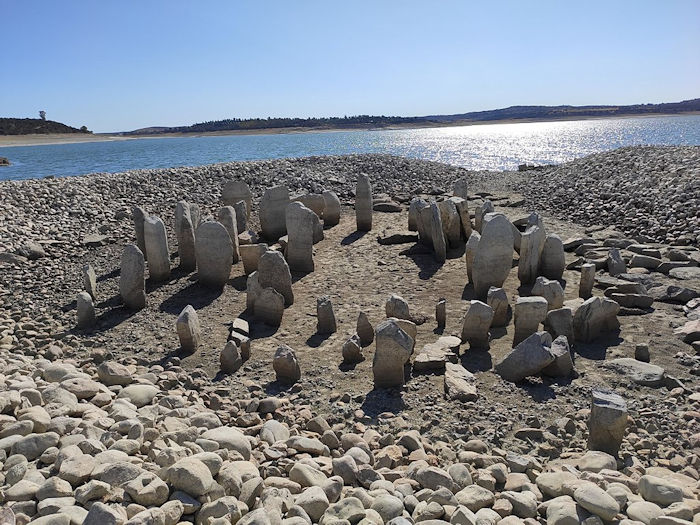Huge Megalithic 7,000-Year-Old Site Dolmen Of Guadalperal Emerges From Dry Lake In Spain
This summer’s hot weather has been extremely troublesome in many European countries. Spain suffered the worst drought in decades. An unexpected side-effect of the warm weather has been discovering unknown archaeological sites.
One of them is a mysterious megalithic monument that emerged from the parched lake bed of the Valdecañas reservoir in western Spain.
Nicknamed the Spanish Stonehenge, the site is officially known as the Dolmen of Guadalperal.

Constructed around 5,000 B.C., the circular monument was likely enclosed. Consisting of a large domed boulder supported by hundreds of vertically-placed rocks, known as menhir, the site offers valuable knowledge into the history of Spain’s megalithic builders.
German archaeologist Hugo Obermaier first discovered Dolmen of Guadalperal in 1926, but the area was flooded in 1963 in a rural development project under Francisco Franco’s dictatorship.
Since then, it has only become fully visible four times. “It currently sits fully exposed in one corner of the Valdecanas reservoir, in the central province of Caceres, where authorities say the water level has dropped to 28% of capacity,” Reuters reported.

“It’s a surprise, it’s a rare opportunity to be able to access it,” said archaeologist Enrique Cedillo from Madrid’s Complutense University, one of the experts racing to study the circle before it gets submerged again.
Although there are many dolmens in Europe, historians and archaeologists still struggle to learn more about the monuments’ builders.
As reported by AncientPages.com just a few days ago, scientists in Spain came across a huge megalithic complex of 500 stones. Archaeologists say the prehistoric site could be one of the largest of its kind in Europe.
The remarkable ancient site is located in the Huelva province in Southern Spain on the border with Portugal, near the Guadiana River.
Spanning some 600 hectares (1,500 acres), the land had been earmarked for an avocado plantation. Who built the Huelva megalithic complex remains undetermined at the moment.
Another intriguing megalithic site in Spain is Dolmen de Soto, a unique millennia-old underground structure that remains a puzzling enigma.
The recent megalithic site will be secured remains an open question, but it’s possible the Guadalperal stones may be moved to a museum or elsewhere on dry land.
As reported by Reuters, “their presence is also good news for Ruben Argentas, who owns a small boat tours business. “The dolmen emerges, and the dolmen tourism begins,” he told Reuters after a busy day spent shuttling tourists to the site and back.
But there is no silver lining for local farmers.
“There hasn’t been enough rain since the spring… There is no water for the livestock and we have to transport it in,” said Jose Manuel Comendador. Another, Rufino Guinea, said his sweet pepper crop had been ravaged.
Climate change has left the Iberian peninsula at its driest in 1,200 years, and winter rains are expected to diminish further, a study published by the Nature Geoscience journal showed.”





